Step Inside an Experimental Boat that Has Sailed 62,000 Miles Powered by Renewable Hydrogen
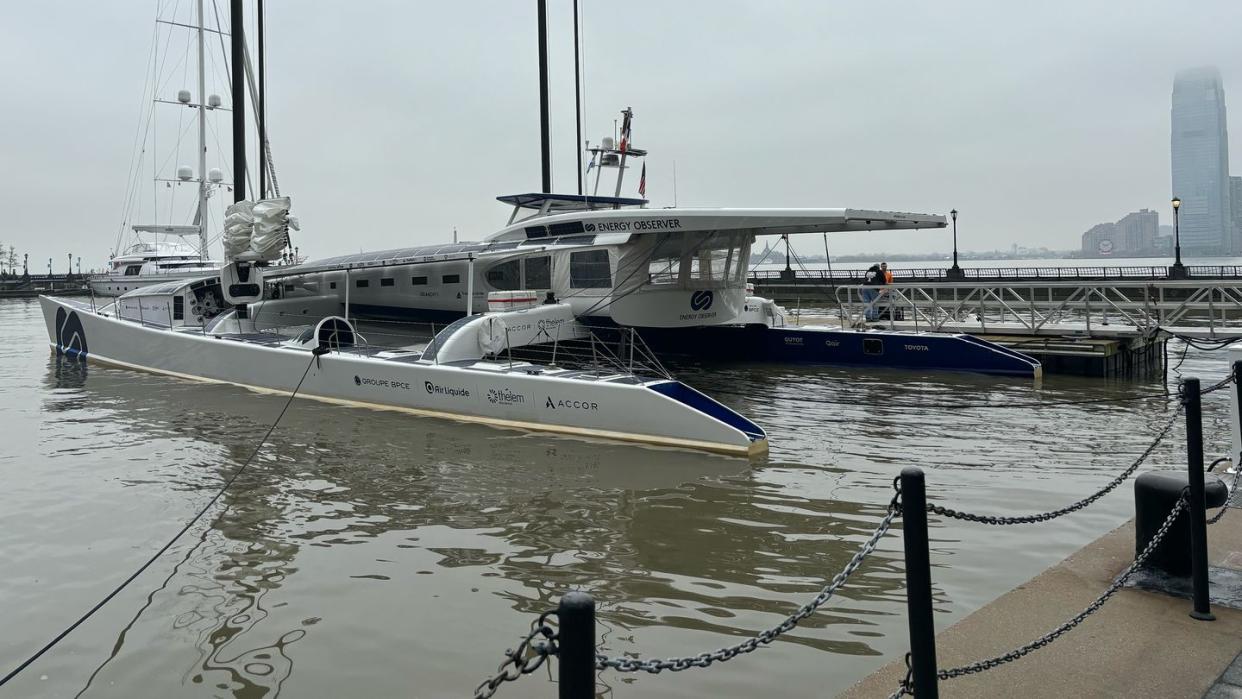
On a chilly morning last week, a wind-, solar-, and hydrogen-powered research vessel named Energy Observer welcomed eight journalists for a tour. The oddly shaped boat (it’s 100 feet long and 40 feet wide) was docked in the shadow of One World Trade Center at New York’s Battery Park City Marina, and a bearded man named George Conty was waiting on its starboard side to help everyone aboard. Conty is one of Energy Observer’s boatswains, and it is his job to keep the equipment shipshape. “We’re going to ask everyone to please take off their shoes or put on protective booties before they come aboard,” he said in a thick French accent. “The solar panels are very fragile and must remain clean so they can charge.”
Energy Observer was built on the hull of a retired racing catamaran and launched in 2017 by a retired French mariner named Victorien Erussard in partnership with a long list of research groups and public and private organizations. Its mission has been twofold: to test experimental energy producing technologies to see if and how they could be scaled to larger applications, and to serve as an emissary to communities around the world, collecting and sharing information on energy strategies and renewable power sources.
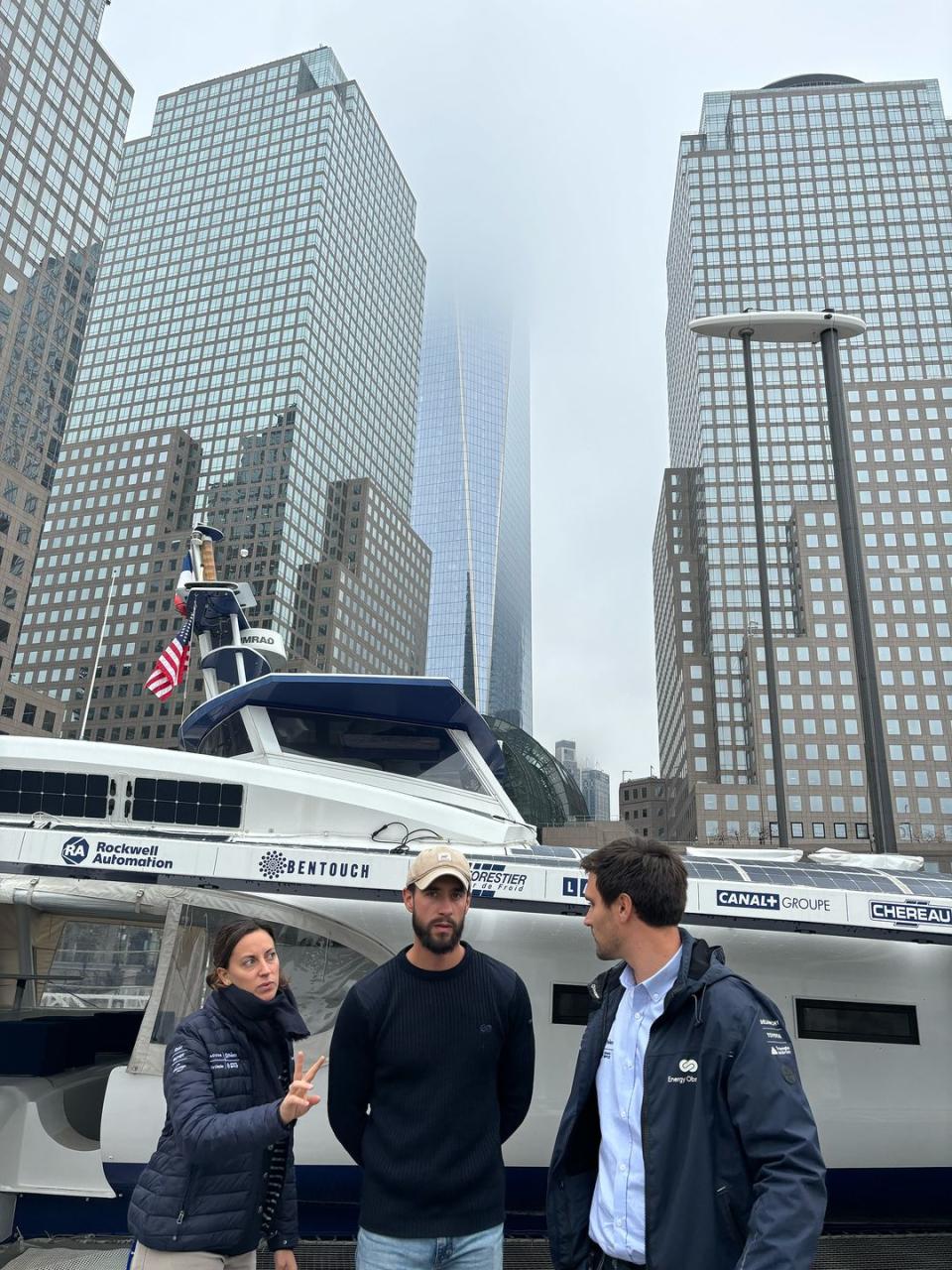
In the beginning, just keeping Energy Observer moving was a matter of trial and error, says Conty, who leads us over one of the hulls, across a section of open netting, and into the main cabin. “At first the boat was outfitted with wind turbines, but those worked only in certain conditions,” he says. In 2019 the turbines were swapped out for two automated sails. “We also started out with fewer solar panels but have been adding them wherever we can,” he says, gesturing to the surrounding deck, every visible inch of which is covered with flexible mats embedded with square solar cells.
The cabin has a small kitchen with a range and oven. “We have to be careful to not cook too many things at the same time, because it uses a lot of electricity,” Conty says. “It means we eat a lot of stews,” says Beatrice Cordiano, Energy Observer’s science officer. In the center of the main cabin is a workstation with two large screens that show the current charging rates from the solar array as well as the battery and hydrogen levels. A computer optimizes the trim of the sails and calculates future energy usage. Behind the station is a refrigerator-size compartment where hundreds of white wires from the solar panels bring electricity to the boat's batteries.
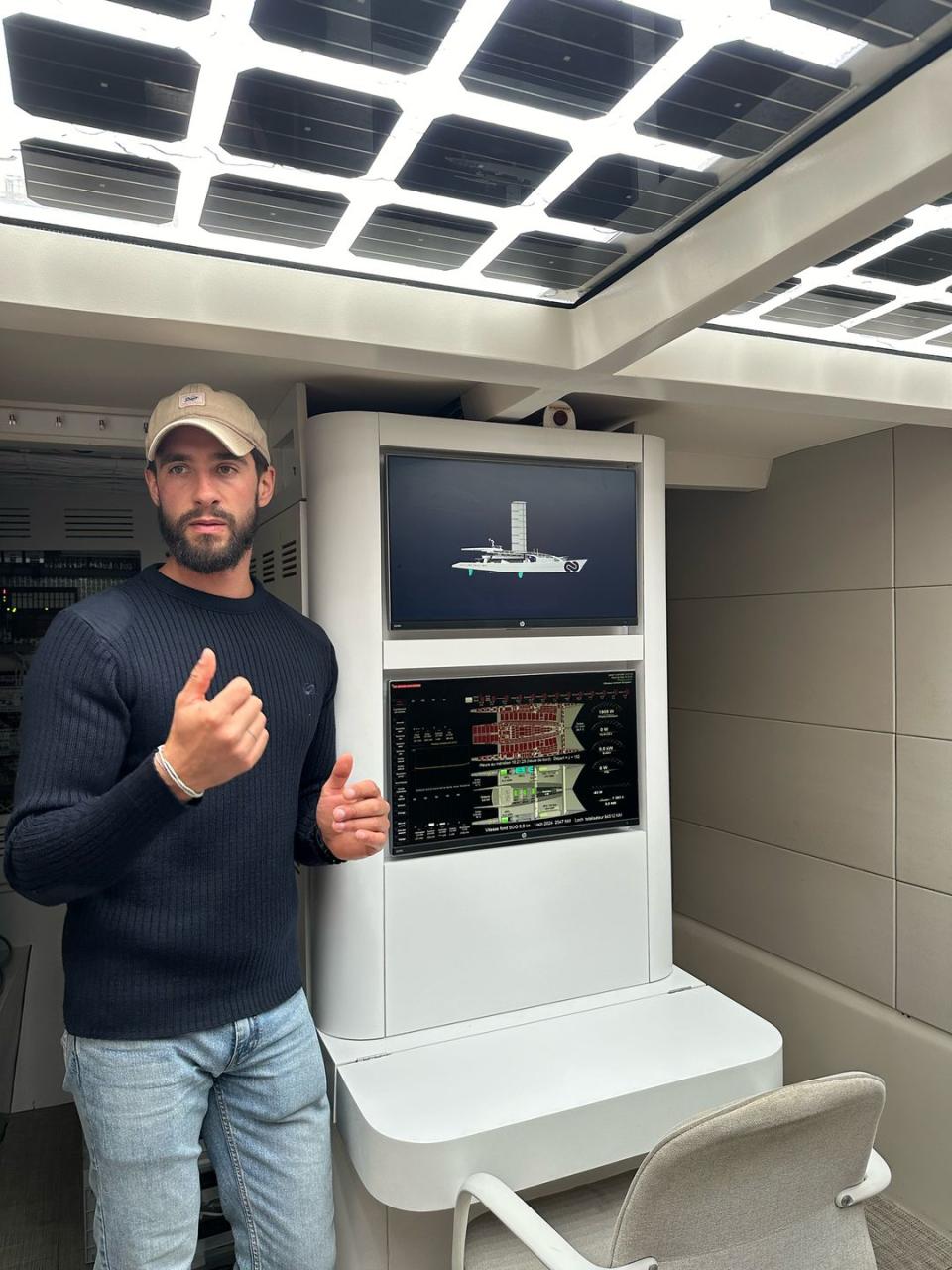
Along with powering everything from the propellers to a laundry machine, electricity is used to create and store hydrogen through an innovative system that draws seawater through desalinators and then separates the oxygen and hydrogen molecules. The hydrogen is then compressed and stored in giant tanks in the boat's hulls. It’s an energy intensive process, so it’s done only when the ship is at anchor or when sailing conditions are optimal.
Through occasional retrofits and near constant tinkering, the boat has sailed 62,000 nautical miles, crossed four oceans, and visited more than 40 countries and 86 ports. “It actually handles well in big seas,” Conty says. “The only rough times have been when we have waves coming from the side, which break under the cabin and splash water inside.”
The multiyear voyage has provided opportunities for Energy Observer’s corporate partners to study their own technologies. Toyota, for example, provided the boat with its fuel cell, a device that converts stored hydrogen back into electricity, which is then used to power the boat. The company modified an existing fuel cell that it already had in production for its hydrogen-powered car, a four-door sedan called the Mirai. “It’s been great to see how it performs in such harsh conditions,” says Jacquelyn Birdsall, an engineer who spearheads Toyota’s hydrogen fuel cell program. “We’re using the data we’ve collected in experimental trucking and generator projects.”
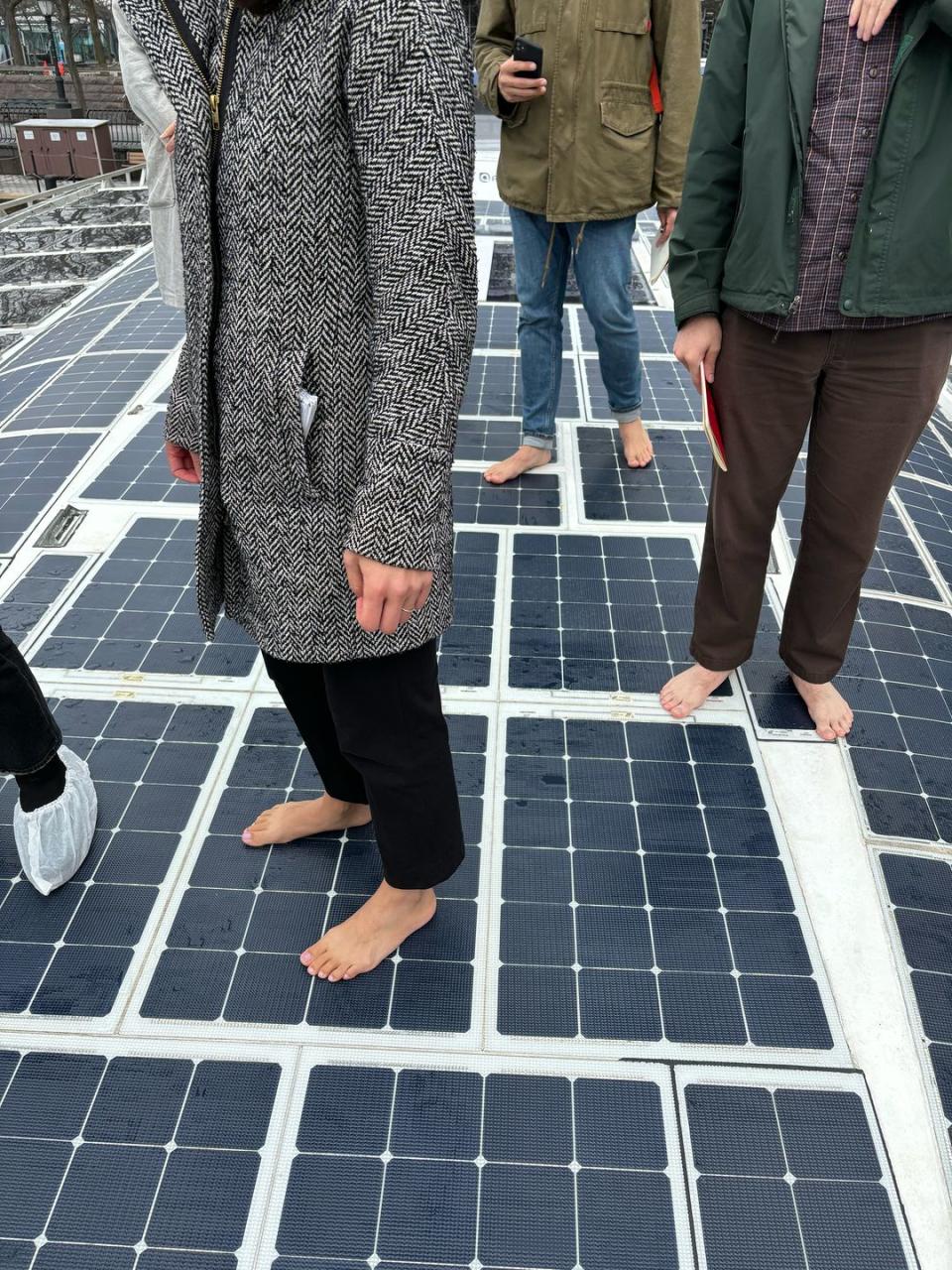
Conty and Cordiano are part a rotating team of 10 sailors who have sailed the boat for the past seven years. Energy Observer’s longest time between stops was in 2020. “It was the start of the pandemic, and ports were shutting down,” Conty says. “We spent more than 70 days at sea looking for somewhere they would let us dock.”
This week the crew will attend a ceremony at the United Nations during which they will present research they have collected during the voyage. Then they sail north to Boston and Saint John, Newfoundland, and then back to France in time for the Olympics, after which the boat will be decommissioned.
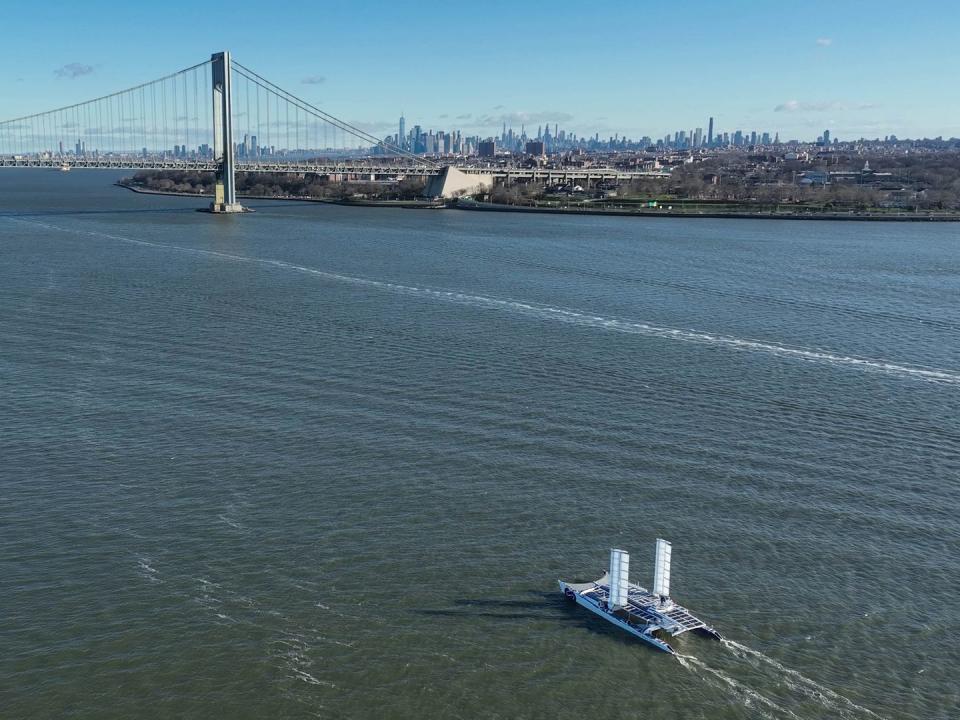
And after that? Conty pulls up a rendering of a 500-foot-long container ship. “This is Energy Observer II,” he says. “It will be powered by liquid hydrogen and will be the lowest-carbon-emitting cargo ship ever built.”
If all goes well, it will set sail in 2026.
You Might Also Like

